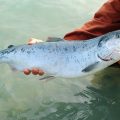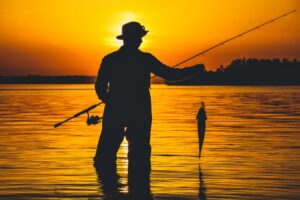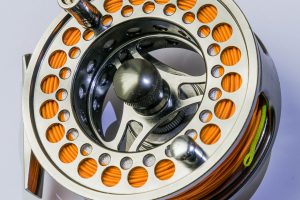Flounders are carnivorous animals and mainly feeds on small fish, crabs, and shrimp and usually hides from the prey, on the sand at the floor of the ocean or sea. They have a lifespan of 3 – 10 years with an optimum pH level of 6.5 – 8.0. Flounders have a unique feature of the flattened body with colored spots. The main colors are brown, yellow, tan, black, and white. Generally, the flounder’s habitat is mainly the ocean floor but also lives around docks, coral reefs, bridge piles, or even estuaries though rarely.
Flounder is a cluster of many species of flatfishes from different families including Paralichthyidae, Pleuronectidae, Bothidae, Samaridae, and Achiropsettidae. Paralichthys is the scientific name of flounders, while flounder is the common name. Flounder can be obtained in most parts of the world waters including Western Atlantic, European waters, North Pacific among others, but initially, the flounders originated from the Atlantic and Pacific oceans.
Flounder Life Cycle
Flounder is a unique species with unusual growth and development. When young, the flounder has bilateral symmetry with one eye on either side and usually swims close to the water surface. After a few days of growth and development, the flounder begins to slant towards one side as the eye on that side begins to migrate towards the top of the leaning side. During this period, other complex body changes occur in the nerves, bones, muscles as well as losing the color on the lower side. On full development to an adult flounder, the fish inhabits the floor of the ocean with the upper side being the eyed side.
Different Types of Flounder
Each flounder family consists of numerous species. For instance, the Pleuronectidae family consists of approximately 100 species. The species in this family are the European flounder from Europe, with a length of up to 50 cm and a weight of 2.7 kg, Winter flounder, which is an American Atlantic fish with a length of 60 cm, and Starry flounder from the North Pacific with an average weight of 9 kg. A common characteristic in this family is that the colored side and the eyes are on the right side.
In the Paralichthyidae and Bothidae families, there are over 240 species. The common characteristic of flounders in these families is that the coloring and the eyes are located on the left side of the flounder. Some of the well-known species in these families include the peacock flounder with beautiful pale blue spots and rings, it is a tropical American Atlantic fish food, the summer flounder, from the American Atlantic with a length of up to 90 cm the brill, a commercial European species with a length of up to 75 cm, and the dusky flounder which is a tropical western Atlantic food fish.
More facts about Flounder
- Generally, some of the well-known flounder species in fishing include European flounder, gulf flounder, halibut, witch flounder, summer flounder, winter flounder, and olive flounder.
- Unlike other fish species, flounders do not lay eggs on objects, instead, they use spawning as the method of fertilization. The female flounders lay eggs into the water while the male flounders release the sperms to fertilize the eggs simultaneously. After fertilization, the flounder fry emerges from the eggs after several weeks.
- Female flounders are usually larger than males.
- Flounders are camouflage in nature. They are mainly brown in color with other colored markings, but they can change the color depending on the environment in a few seconds.
- The color of the flounder can show its emotional state. Threatened flounders usually have a pale-color body.
- Flounders are usually active at night.
- The mating season occurs during the warmest months and the female produces up to 100,000 eggs while the male fertilizes them.
- The fins have no spines, but in some cases, males have spines on the anterior side of the eyes.
- Flounders have a projectile and asymmetrical mouth.











